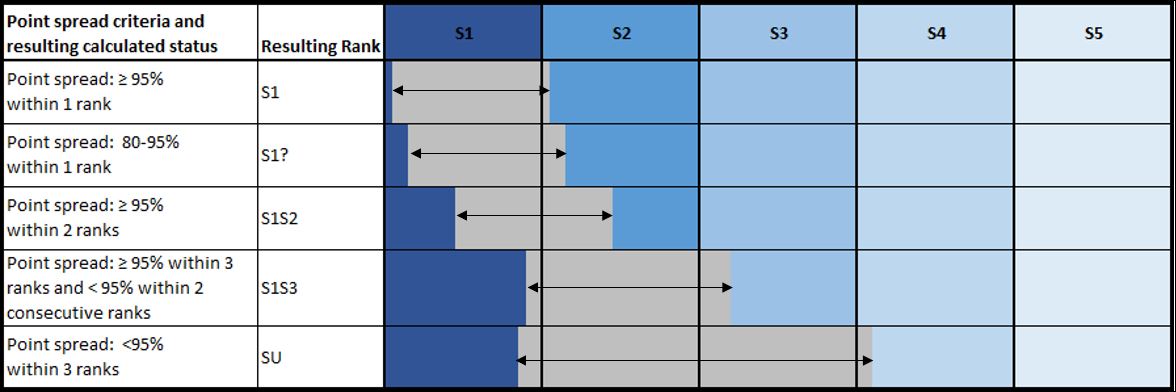Conservation Status Ranks
The Conservation Data Centre (CDC) assigns provincial Conservation Status Ranks that reflect how at risk species and ecological communities are of being lost in B.C.. These ranks can be used to inform conservation priorities.
BC Species & Ecosystem Explorer search results display the following provincial Conservation Status Rankings. The year the status was last reviewed appears in parenthesis after the ranking code. The prefix on the code indicates the geographic level at which the rank is applied – subnational (provincial), national or global.
|
Type of Rank |
Meaning |
|---|---|
| S | Subnational ranks assigned and maintained by the B.C. Conservation Data Centre |
| N | National ranks assigned by national and international conservation authorities |
| G | Global ranks assigned by national and international conservation authorities |
| View the complete list of NatureServe ranks | |
| Modifier Code | Meaning | ||
|---|---|---|---|
| X | Presumed extirpated | ||
| H | Historical (species) / possibly extirpated (ecological communities) | ||
| 1 | Critically imperiled | ||
| 2 | Imperiled | ||
| 3 | Special concern, vulnerable to extirpation or extinction | ||
| 4 | Apparently secure, with some cause for concern | ||
| 5 | Demonstrably widespread, abundant and secure | ||
| NA | Not applicable | ||
| NR | Not yet assessed | ||
| U | Unrankable | ||
| ## | Range Rank—Used to indicate the range of uncertainty about conservation status (e.g. S2S3) | For further information about these uncertainty rank modifiers see explanation below | |
| ? | Inexact or Uncertain—Denotes inexact or uncertain numeric rank | ||
| View the complete list of NatureServe ranks | |||
How do we assign uncertainty to ranks?
What do the ranges and question marks mean? This graphic shows examples of how we arrive at the various Conservation Status Ranks depending on the results obtained when applying the values to each of the criteria. Conservation status assessments often include one or more status factors that are assigned a range of values to capture uncertainty, due to information that is not precise enough to allow the selection of a single value. In these cases, the low and high values of the range rating are carried through all steps in the assessment process, resulting in a range in calculated status rank. In these cases, the low and high scores at the ends of the range are evaluated according to the point spread criteria in the first column of the table to determine the final calculated conservation status rank.
Assessing Ranks
Red, Blue & Yellow Lists
Access the Data
Contact information
Please contact the Conservation Data Centre for more information.
250-356-0928
cdcdata@gov.bc.ca


